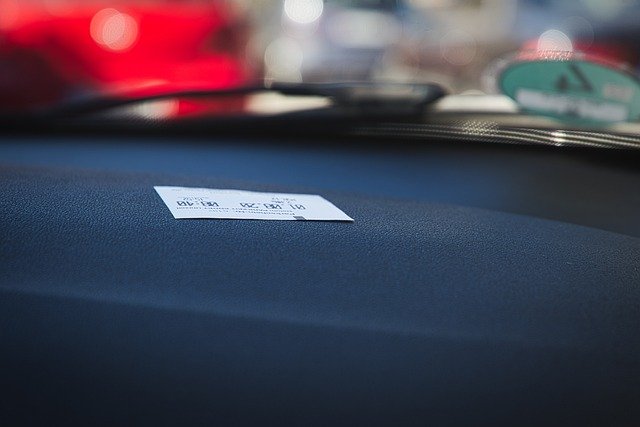The Legal Journey of an Impounded Car: From Tow Truck to Auction Block
When a vehicle is impounded, it begins a carefully regulated journey that stretches from the first tow to its ultimate resolution—whether that means retrieval by the owner or lawful disposal. This article explains each stage of that process in plain language and highlights the key legal safeguards and consumer protections that ensure fairness and transparency for everyone involved.

How and Why Vehicles Become Impounded
Vehicles enter the impound system through various legal channels. Common reasons include parking violations, driving without valid registration or insurance, suspected involvement in criminal activity, or abandonment. Law enforcement officers typically make the initial determination to impound a vehicle based on specific violations of state or local laws.
The impoundment process begins with documentation of the vehicle’s condition, contents, and reason for seizure. Officers complete detailed reports noting existing damage, personal items present, and the legal justification for impoundment. This paperwork becomes crucial for both the authorities managing the vehicle and the owner who may later seek its return.
The Initial Holding Period and Owner Notification Requirements
Once a vehicle arrives at an impound lot, the clock starts ticking on a legally mandated holding period. This timeframe varies by jurisdiction but typically ranges from 30 to 90 days. During this period, authorities must make reasonable attempts to locate and notify the registered owner about the impoundment.
Notification requirements are strictly regulated and generally include:
-
Certified mail to the registered owner’s address
-
Notification to any lienholders with financial interest in the vehicle
-
Public notices in local newspapers if owners cannot be located through direct means
These notifications must outline the reason for impoundment, storage fees accruing daily, documentation required for release, and deadlines before the vehicle becomes eligible for auction. Failure by authorities to follow proper notification procedures can become grounds for legal challenges to the impoundment.
Vehicle Owner Rights and Responsibilities During Impoundment
Vehicle owners have specific rights throughout the impoundment process, though these rights come with corresponding responsibilities. Owners typically have the right to:
-
Receive prompt notification of impoundment
-
Retrieve personal belongings from the vehicle (even if unable to reclaim the vehicle itself)
-
Contest the impoundment through administrative or court hearings
-
Reclaim the vehicle by paying applicable fees and addressing the underlying violation
However, owners must act within designated timeframes. They must also provide proper identification, proof of ownership, and evidence of addressing the violation that led to impoundment (such as obtaining insurance or registration). Perhaps most significantly, owners become responsible for accumulating storage fees, which can quickly exceed the value of older or damaged vehicles.
Local authorities have the responsibility to maintain secure storage facilities, prevent damage to vehicles, and follow all legal procedures regarding notification and eventual disposition. They cannot arbitrarily extend holding periods or impose fees beyond those established by local ordinance.
The Transition from Impound to Auction Eligibility
When owners fail to reclaim vehicles within the designated holding period, these vehicles begin the transition toward public auction. This process typically involves:
-
Final determination of abandoned status after all notification periods expire
-
Application for an abandoned vehicle title through the department of motor vehicles
-
Valuation assessment to determine minimum bid requirements
-
Vehicle preparation, which may include minimal cleaning but rarely involves mechanical repairs
-
Cataloging for auction listing with vehicle identification number (VIN), make, model, and known condition issues
Before reaching auction, vehicles undergo title searches to identify and clear liens and establish a clean title that can transfer to a new buyer. If significant liens exist, lienholders may reclaim the vehicle or waive their interest to allow the auction process to proceed. The costs of processing these titles and clearing liens are typically added to the vehicle’s outstanding fees.
How Police Impound Auctions Operate
Police impound auctions represent the final stage in this legal journey. These auctions operate according to specific protocols designed to balance transparency, revenue generation for municipalities, and buyer protection.
Auctions may be conducted in-person at impound facilities, through online platforms, or via third-party auction companies contracted by local governments. Regardless of format, they typically share these characteristics:
-
Public notice requirements (usually 1-2 weeks before the auction)
-
Vehicle viewing periods where potential buyers can inspect but not test drive vehicles
-
Registration requirements for bidders, often including deposits
-
“As-is” sales with limited or no warranties
-
Full payment requirements, typically within 24-48 hours of winning bid
Auction proceeds first cover the costs of towing, storage, and administrative processing. Any excess funds may be held for a period (often 1-3 years) during which the former owner can claim them before they’re transferred to government general funds.
Understanding Pricing and Value at Impound Auctions
The pricing of vehicles at impound auctions follows patterns quite different from traditional used car markets. Several factors influence the final sale price, creating opportunities for significant savings but also considerable risks for buyers.
| Condition Category | Typical Price Range | Key Factors Affecting Value |
|---|---|---|
| Excellent/Good | 50-70% of market value | Low mileage, clean title, minimal damage |
| Fair | 30-50% of market value | Cosmetic issues, higher mileage, may need minor repairs |
| Poor/Project | 10-30% of market value | Significant mechanical issues, may not be operational |
| Luxury/Specialty | Highly variable | Brand prestige, rarity, market demand |
Prices, rates, or cost estimates mentioned in this article are based on the latest available information but may change over time. Independent research is advised before making financial decisions.
The majority of vehicles at impound auctions fall into the fair or poor condition categories. While exceptional deals do occasionally appear, most vehicles require some investment beyond the purchase price to return to reliable operation. Successful auction buyers typically budget for immediate repairs and maintenance when calculating the true cost of their purchase.
Post-Auction Procedures and New Ownership Transfer
After successful bidding, new owners must navigate specific procedures to complete the ownership transfer. These typically include:
-
Paying any applicable sales tax and auction fees
-
Obtaining a bill of sale and auction certificate
-
Applying for title transfer at the DMV
-
Obtaining new registration and plates
-
Securing insurance before driving the vehicle
Most jurisdictions impose strict deadlines for removing vehicles from impound facilities—typically 48 to 72 hours after auction’s end. Failure to retrieve vehicles within these timeframes can result in renewed storage fees or even cancellation of the sale. The paperwork received at auction rarely constitutes complete documentation for legal operation; buyers must complete the title transfer process before legally driving their new purchase.
Understanding this complex journey from impoundment to auction provides valuable insight for both vehicle owners facing potential impoundment and prospective buyers seeking opportunities at these auctions. By knowing the legal frameworks, timeframes, and procedures involved, all parties can navigate the system more effectively.




